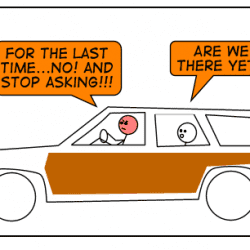Let us prey: Who’s to blame?

Everybody, nobody? After a long litany of online rants, 24-year-old Matthew Murray gunned down unarmed innocents at the Youth with a Mission Center in Denver. He proceeded to make a stop at the Web site where he regularly posted his messages to verbally take aim at Christians in particular before heading to Colorado Springs half a day later, where he took more lives at New Life Church.
Murray’s actions, like those of many other mass murderers in recent years, are made more egregious by the nature of the victims he claimed. Like small Mennonite communities, unknowing holiday shoppers, school-age children, college students and faculty and so on, missionaries in training and church congregants are completely vulnerable. Such violence not only suggests complete disregard for human life, but also smacks of utter cowardice.
So, whom do we hold accountable for his atrocities?
Let’s blame the Internet for providing him with the anonymity and fuel for his emotional fires. After all, you can find a supportive group of peers for practically anything online, including gunning down innocent bystanders.
Perhaps we should condemn violent video games and films for numbing the senses and sensibilities of our youth. Though we have no reports thus far of Murray being a video-game junkie, it’s not a stretch of the imagination to assume as much. He was young, male and had at least a basic understanding of computers. In the days to come, we’ll undoubtedly learn he was a regular player of Halo, Doom or some other “shooter” games.
We could dogpile on home-schooling while we’re at it, since Murray was home-schooled. After all, how can a child possibly develop necessary social and emotional coping skills while cloistered away from his or her peers at home, right?
It would be irresponsible to leave Ted Haggard, founder and former senior pastor of New Life church, out of the blame game. Murray mentioned Haggard in some of his blog posts, citing the hypocrisy of his apparent do-as-I-say-not-as-I-do approach to ministry. Murray had at least loose ties with New Life, so it could be that his outrage stemmed from disillusionment about an institution he thought would usher him into mission work.
This leads us to the Youth with a Mission office in Denver. Word is that it dismissed Murray from its missionary training program, citing some sort of vague reference to “health issues.” Certainly, being turned away from a calling to humble service is to blame for his disintegration into whatever personal crisis that culminated in the assassinations of his peers.
We should also point a finger both at the firearms industry and legislators for their permissive approach to dealing with guns in the hands of our citizenry. It can, and likely will be argued that, without their complicity, he would not have had the means to carry out his bloody rampage in the first place.
One could cast a judging eye toward Murray’s parents, extended family and friends, as well. After all, how could they not have seen this coming? Could such a violent person not have exhibited some signs of his potential for dangerous behavior if anyone was really paying attention?
And how about the Web site managed by the Association of Former Pentecostals where he left his telling notes? Did they alert authorities about the content of his posts? If so, did they do so in a timely enough manner? Any of the readers on the site could have done the same. Did they, and if not, why?
We could expand our witch hunt to include entire political parties, religious denominations, or even religion all together, without too much effort. But explaining extreme human behavior such as this is far too complex to place the target of blame on any one person or group.
This hardly will stop us from trying, because it’s in our nature to hold someone, something accountable for actions we do not understand, and which we sense we can’t control. Somewhere in the backs of our minds, a voice tells us that, if we can root out and eliminate the cause of that which we fear, we can assure ourselves safety in the future.
Such assurances, however, are illusory. It’s fair to ask such questions, but to expect answers that give us any real comfort is to misunderstand the nature of evil: It is everywhere around us and within us.
We don’t like that answer, but in the end, it’s the byproduct of our own free will.
We’re victims of our own choices, and that scares the hell out of most of us.
Christian Piatt is the author of “MySpace to Sacred Space” and “Lost: A Search for Meaning.” For more about Christian’s books, visit www.christianpiatt.com.











